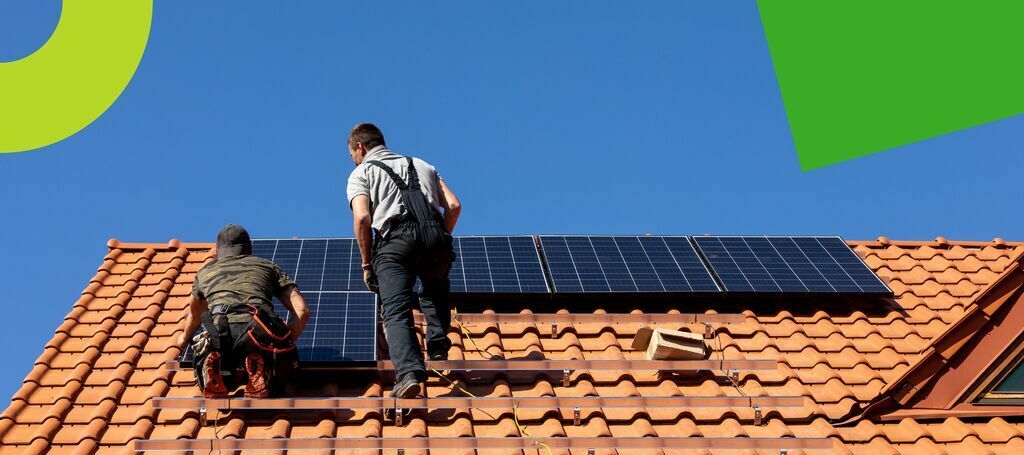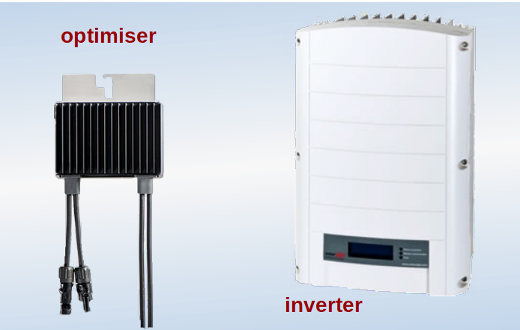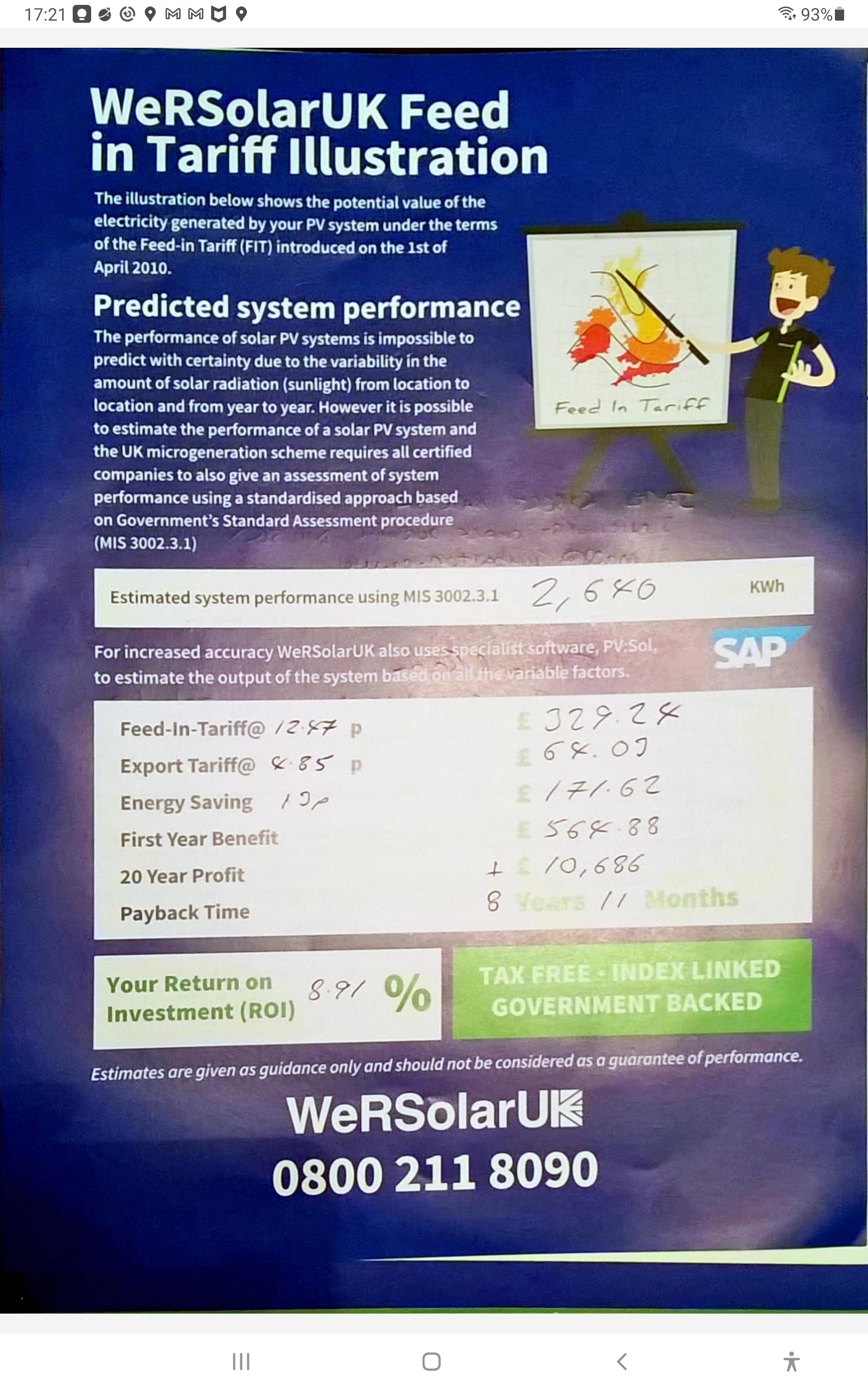Updated on 21/01/25 by Chris_OVO:
Interested in generating energy from the sun? 🌞 Guess what...
Thanks to the help of our PV champions and Plan Zero heroes, we’ve put together a collaborative guide to all things solar.
Thinking about getting into the micro-generation game but don’t know where to start? - Check out the info below for what you might need to consider before joining the solar panel club.
Below is a series of experiences and insights from community members for you to get a different point of view on this energy generating tech. Please note that this is not the viewpoint and advice of OVO. As always, it’s important to do your own research. Check out our Forum guidelines here.
How many PV panels do you have, and what type?
I have PV panels - 14 of them, styled “8.33 285w ETERNITY+10 PV modules”. They are made by Table Trading S.L. aka 8.33 Solar.
I have a 4kW domestic solar PV installation since 2016.· The array is 12 x 330w Panasonic HIT N Hybrid Modules. We chose Panasonic as it came with 25 Year Performance & 15 Year Product Warranty.
I have the following equipment fitted for the last 4 years with the FIT paid by British Gas at Feed in Tariff 4.68 p/kWh and Export at 5.50p/kWh giving about £315 last year other years not analysed as I always had better things to do. The system 26 JA Solar 270W Black JAM6(K)(BK)-60-270-4BB fitted on a south facing roof, a Samil Solar River 6000TL inverter and a Landis & Gyr - 5235B meter
I’ve been using PV Solar Panels off-grid for about 20 years. I have built a number of devices which can use the DC power directly rather than convert it to 230v AC mains first.
There’s no ‘standard size’ for a rooftop solar panel, but they tend to be around 1.6m x 1m and weigh about 20Kg.
As I’m using some new panels and some relocated, I’ve stuck with my favoured Panasonic HIT units.
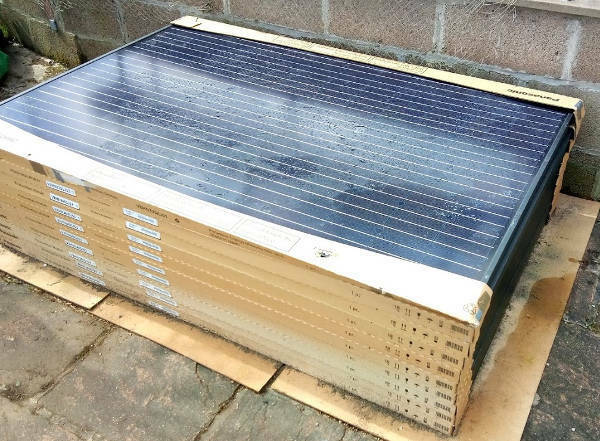
I had solar panels installed in 2011, I have 12 Yingli 235W panels which feeds a Fronius IG 30 Inverter with a 20yr extended warranty, it is cabled down the void my soil pipe runs in to the garage to the Elster generation meter and from there to a 16A MCB in my Consumer Unit. The total peak power rating is 2.8kWp. To date, I have generated 26.58MWh.
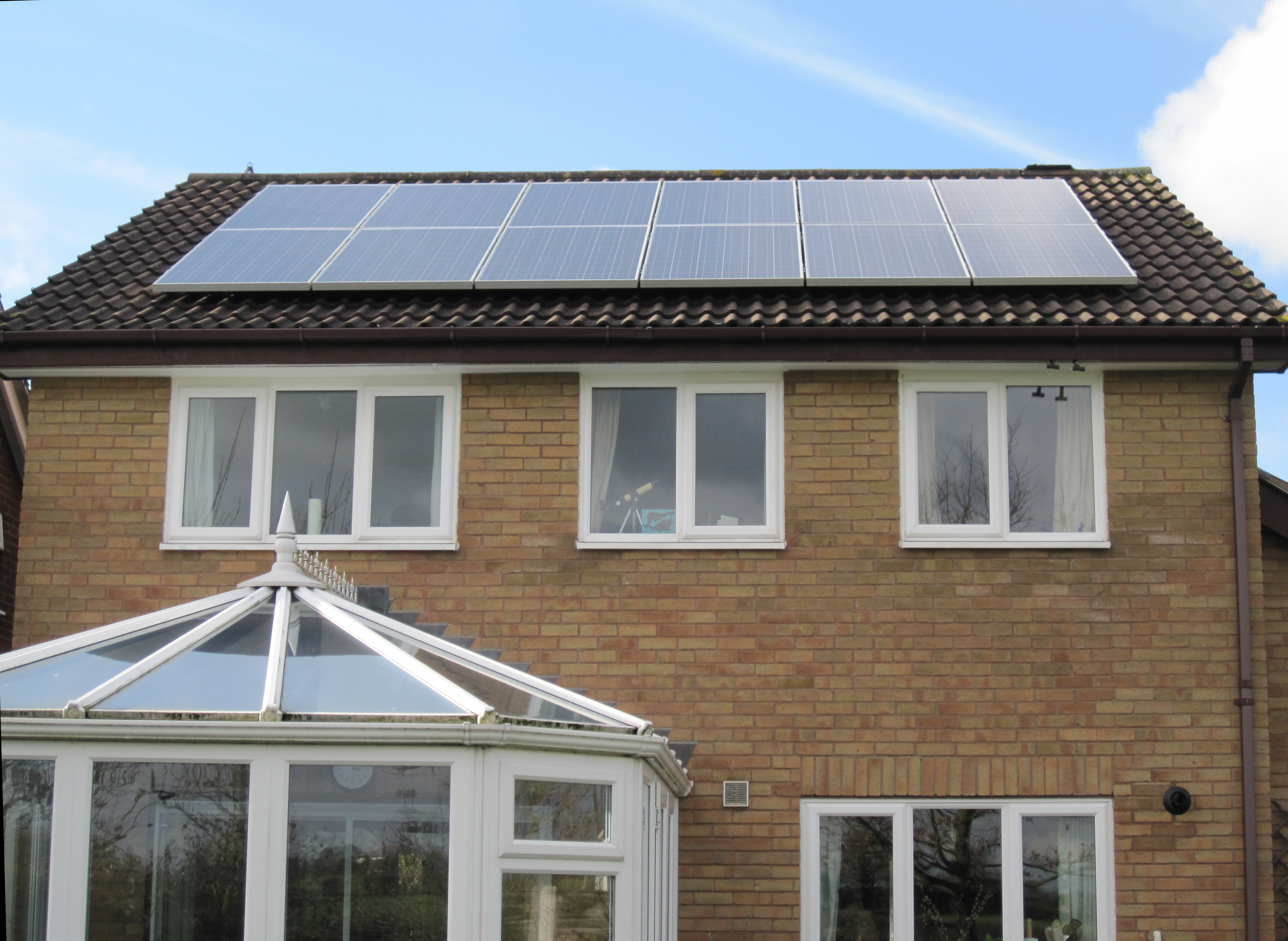
How are they set up on the property?
There’s lots to consider in terms of placement - from the facing and angle of your roof, the impact of shade, to your location in the country:
[I have 14 panels], 6 East facing and 8 West facing for the afternoon sun, using a Clenergy mounting kit. 3.99 kW nominal they rarely reach 3 at any time. We’re in Durham in the North East of England, so not ideal for lots of sunshine in comparison to the South of the country. Our best day this year was 1 June at 25.6 kWh; our highest peak generation was 2 Jun at 2.87 kW.
Fortuitously my renovated Devon farmhouse has an extensive south-facing roof at the ideal angle of 35°
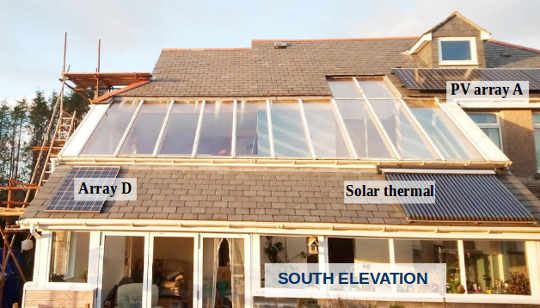
The slope of the roof is almost important as its orientation towards south
Here’s a diagram from an excellent online tutorial published by Viridian Solar in Cambridgeshire
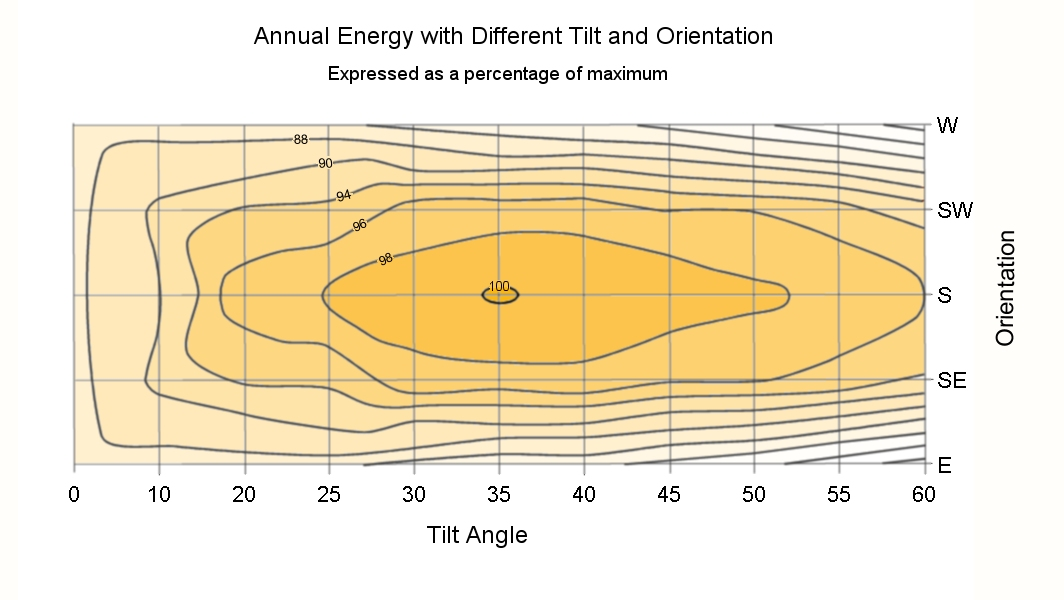
This might be a good moment to show a diagram which illustrates the amount of energy available from the sun and how this translates into what is achievable using current silicon panel technology.
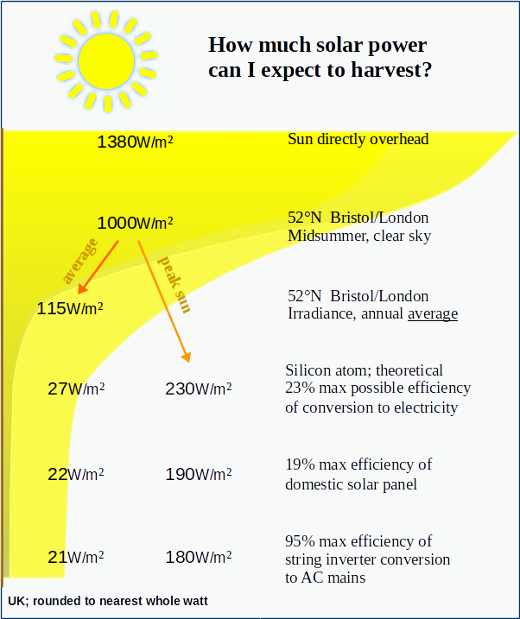
The effect of cloud cover is quite pronounced. Any shading on an array of PV Panels will dramatically reduce the power available.
How do your panels work with other equipment in the property such as energy storage, PV diverters, immersion heaters or electric vehicle charging?
I have an Optimmersion intelligent immersion heater controller which was installed in July 2014 and after 7 years has paid off 89% of its cost of £300 so will probably take another 7+ yrs to break-even; this is calculated by estimating gas savings from not having to heat water with the boiler. However, there’s a certain satisfaction to getting free hot water and in the summer we turn off the gas boiler and use the hot water the immersion provides.
Following the acquisition of my first Nissan Leaf in April 2018 I had a zappi EV charger installed in June 2018 for the princely sum of just under £80 after the government grant and hard won contribution from Nissan. The zappi automatically charged the car when surplus generation equalled or exceeded 1.4kW and was a great device.
My experience has been positive so far. I wish we could have more which would then make more sense of a battery. Last time I looked was when we had a power cut, and our panels stopped providing power to us. I was astounded to find that most batteries also just stop working in such a situation.
At some stage I will get round to connecting it up to the immersion heater I had retrofitted when I eventually found a plumber who could do it - but I need to find a different installer.
We don’t yet have an EV but that could be a battery alternative.
Since 2020 I have V2G and SMETS1 which reduced my FIT so I hope the export credits compensate for the reduced microgeneration.
My PV Solar Panels are connected to the PowerVault Battery using an AC-input configuration.
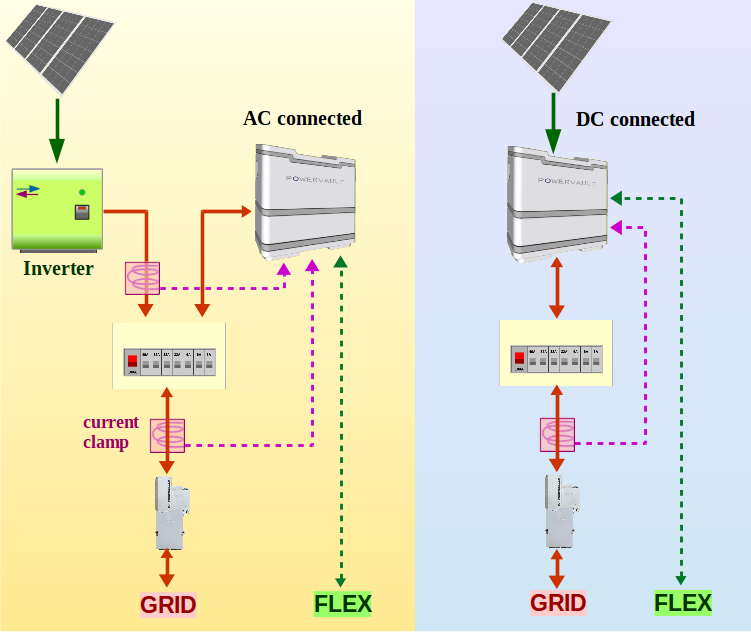
Let’s calculate this using generous efficiencies of 94% for AC-to-DC (charge) and 90% for DC-to-AC (discharge) cycles.
For each 1kWh generated by the PV Panels, 1x0.9x0.94 = 846w ends up in the battery.
To retrieve that back into the home I get 846x0.9 = 760w
Using this configuration, my three rooftop arrays rated at 5.1kW actually yield just 3.88kW from a period of full sunshine.
That’s appallingly bad, and no one would seriously consider such an arrangement if they were aware of the figures.
The Storage Battery itself has running costs, mainly for the fans which cool it. My measurements show this is approx 500kWh per year. That equates to around £20 of ‘lost’ SEG payments… which I don’t receive anyway!
Since then I have had a Tesla 13.64 k battery fitted about 3 months ago and I have fitted my Energi Eddi and Zappi for hot water production and Car charging from surplus PV energy. My car is a fully electric Kia Niro plus 64 kWh battery, I charge whenever I remember and I have surplus energy and so far approx 2000 miles have only once paid or a charge. On the whole I am delighted with the system performance especial the reduction in grid demand the Tesla has produced. Don’t ask for exact figures, let it suffice to say since the Tesla was fitted in late May I have only used 15 kWhs, so at my present rate not considering the standing charge that’s about £1.80 of electricity, approximately 2 summer months for a couple of quid.
Who was your installer and what was the installation experience?
Installed October 2015 at a cost of £5995 by a local company called WeRSolarUK (which nearly put me off). Installation was straightforward, all done in a day. The company isn’t operating and their web site isn’t there, but hasn’t been struck off or shut down according to companies house.
The installation included an EPC, rating our house as B 83.
The installer was first4solar who were responsive and professional till the point of invoice settlement. Unlike many suppliers, they remain an ongoing concern.
My concern remains the longevity of the solar panels which is indirectly proportional to the installers/companies survive in the business. The ROI or risk to reward is disproportionate especially with the FIT now gone.
This issue needs highlighting here for any others contemplating grid-connected PV Solar Panels. You are completely dependent on the installers adequately providing documentation. Once equipment is fitted and any invoices paid, you lose all leverage to get this sorted.
It’s worth checking out the MSC website , they’re able to help find an installer who can provide the necessary certification to allow you to apply for export payments via the Smart Export Guarantee and advise what to do if you’ve got already got panel installed but don’t yet have the required documentation.
What is the income or saving you make and what is your expected return on investment?
The predicted performance was 2640 Kwh (sic) pa. Actual is 15140 kWh over 5 years, so 3028 pa.
I’m on the FIT scheme, starting at 12.47p for generation and 4.85p for export. When installed we had dumb meters, but in 2017 got smart meters so the export was more accurate. Regrettably I still have to submit the readings to OVO manually. Since installation, export is almost exactly half generation. Some days our electricity use is negligible during the day.
So far saved electricity over 5 full years has been worth £999, based on units used compared to pre-solar. FIT payments have been £2545, so between those it has paid off more than half already. The estimate at the time of installation was [around 8 years, which is in line with the observed performance]
The estimated savings was (forecasted to be) about £450 per year with an estimated ROI over 11+ years so yet to recover the investment.
As of now, generated 18kWH of electricity so roughly £2600 of savings achieved in the last 7 years.
On day one, I created a spreadsheet and recorded the generation every day with the aim of moving to weekly or even monthly…..I’m still doing it daily!
I then compared the total cost of the system (£12710.31 inc. extended warranty on inverter) with the total income generated. I have a daily record of generation since 2011 compared to the estimated generation, also monthly and annual generation compared to estimated generation and also the weather on the day, graphs of annual generation compared with the original estimate, graphs showing all years cumulative generation, table of monthly generation and payback, a table of FIT payments.
I feed my data into a website https://pvoutput.org which allows you to choose favourites and compare your output against theirs and I have to say mine holds up very well against some larger systems.
What needs to be considered in terms of maintenance?
They keep remarkably clean - I’ve twice washed them with a long handled brush attached to the garden hose. They are tight enough to the roof that we don’t get birds underneath. A roofer we used recently commented on that as he’s previously come across birds nesting under panels, even a pigeon!
Should maintenance be needed on your set up, and the original installers were no longer in business, I’m assuming another installer would be capable and qualified to do the work?
I hope so! SolarEdge still have lots of links to approved installers, so although my installer has gone, I hope it wouldn’t be difficult. There is at least one nearby that will do a service for £75, and specifically state “We will service your system, even if we didn’t install it”.
How is your exported energy measured and how do you take/submit these readings?
We have report PV figures manually each quarter (M, J, S, D). The reading from the generation meter indoors, and the EXP KWH from the "smart" meter outside (press 9 and wait for the phrase to show followed by the number). The IHD isn't any use for this. The instructions specifically said we cannot use the export reading from the generation meter. The payment takes almost 2 months.
Prior to getting the smart meter our export was estimated at 50%. It has actually been around that in winter but over 70% for the two summer quarters.
Apparently SMETS2 might be able to report the EXP KWH but I'd still have to report the generation reading. The OVO Guide to smart meters states : If you have a SMETS1 meter, a remote software upgrade will enable it to work across the same network used by SMETS2. That means it will be migrated onto the national smart meter network - but I don't imagine it will enable SMETS2 functionality.
I don't know any technical details of the generation meter, but it was installed with its own big off switch next to the existing consumer unit aka fuse box.
SMETS1 meter followed by generation meter.
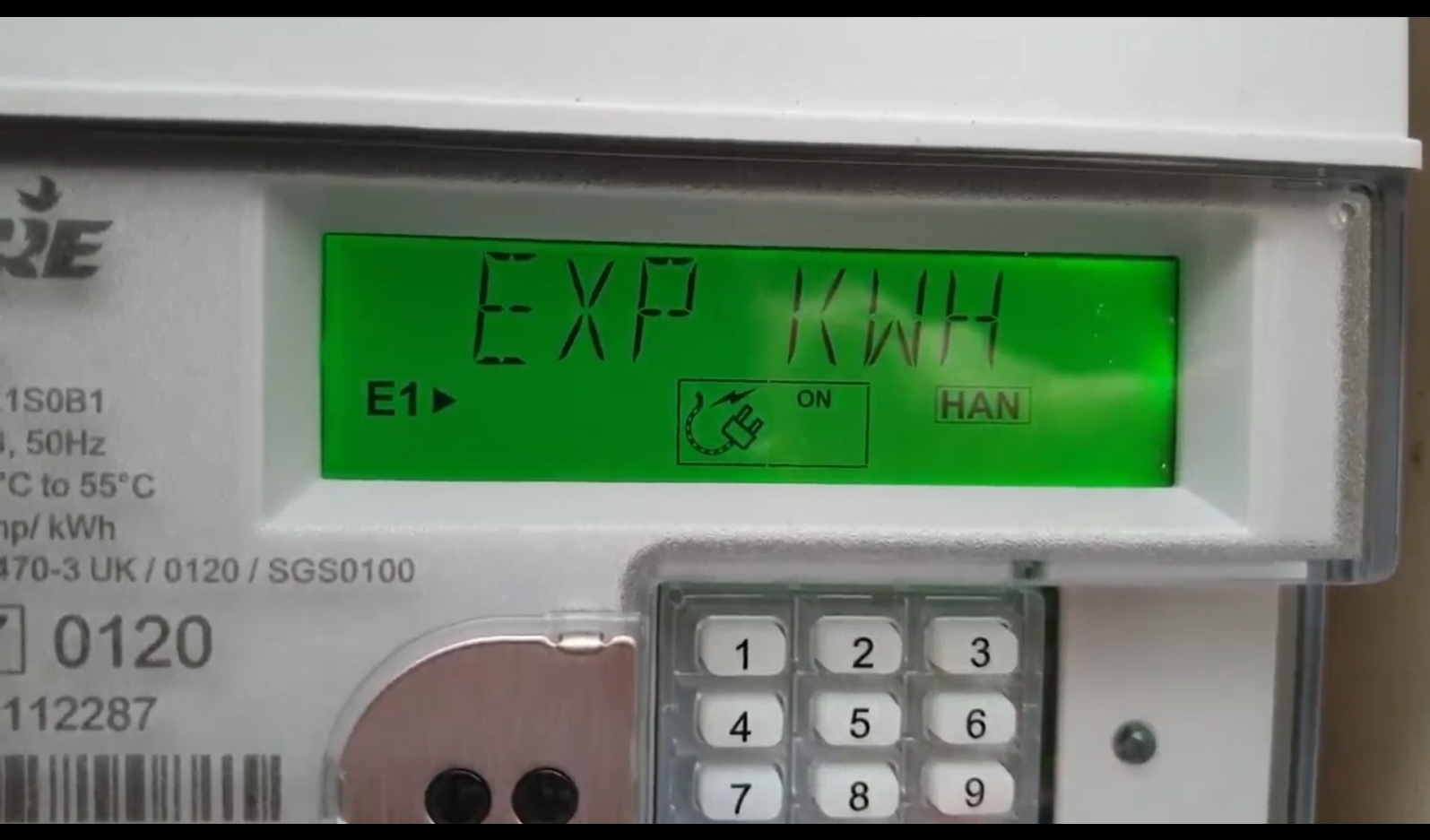
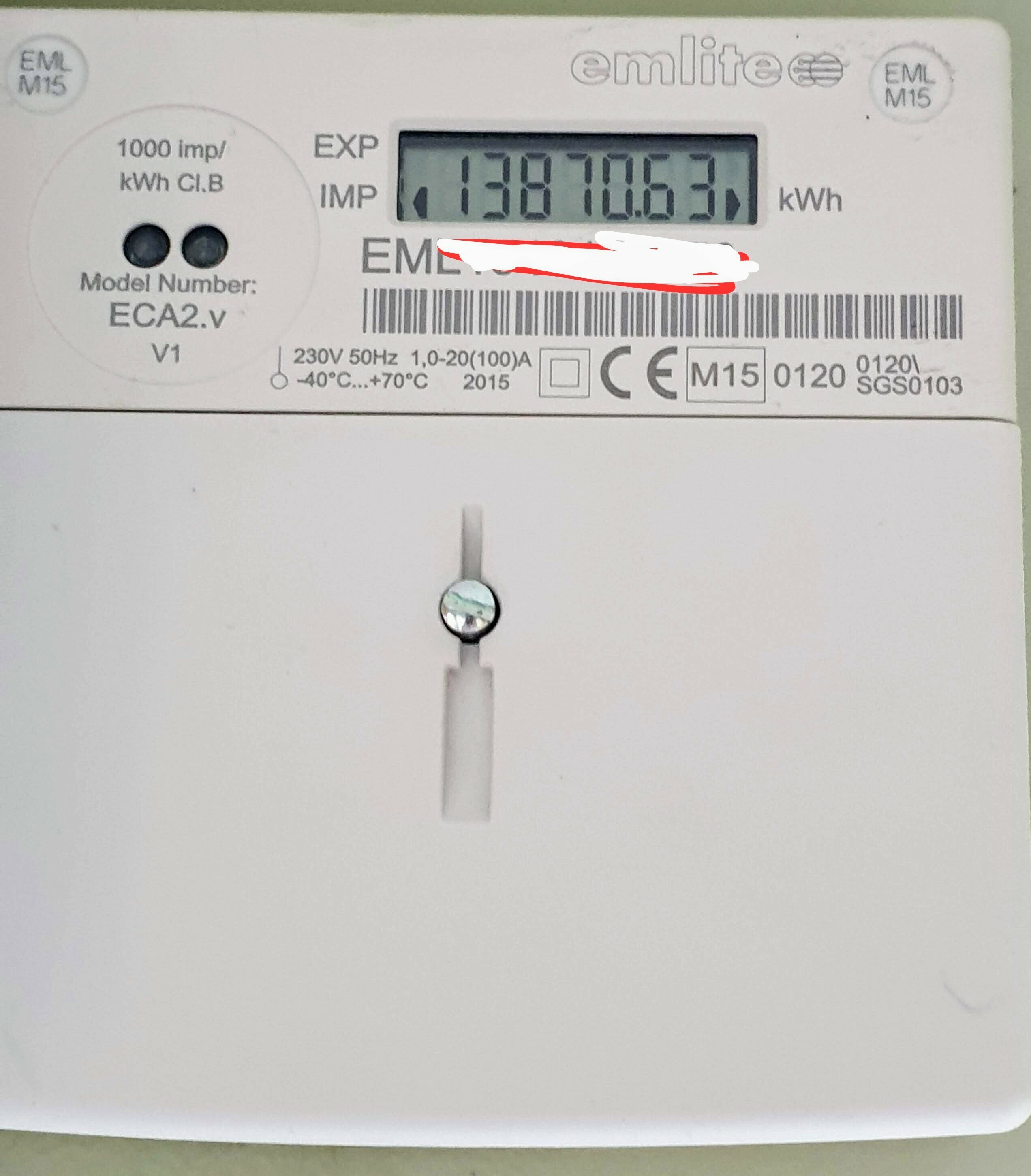
What software is available/included to help monitor the energy you create?
The inverter manufacturer [SolarEdge] provides the web/app interface to monitor generation and state that it will be there for the lifetime of the installation without ongoing cost.
Solaredge claim to be The World’s #1 Home Solar Energy System. The app has been updated several times since 2015, as has the web site. The company seems forward thinking and active in homes and businesses round the world.

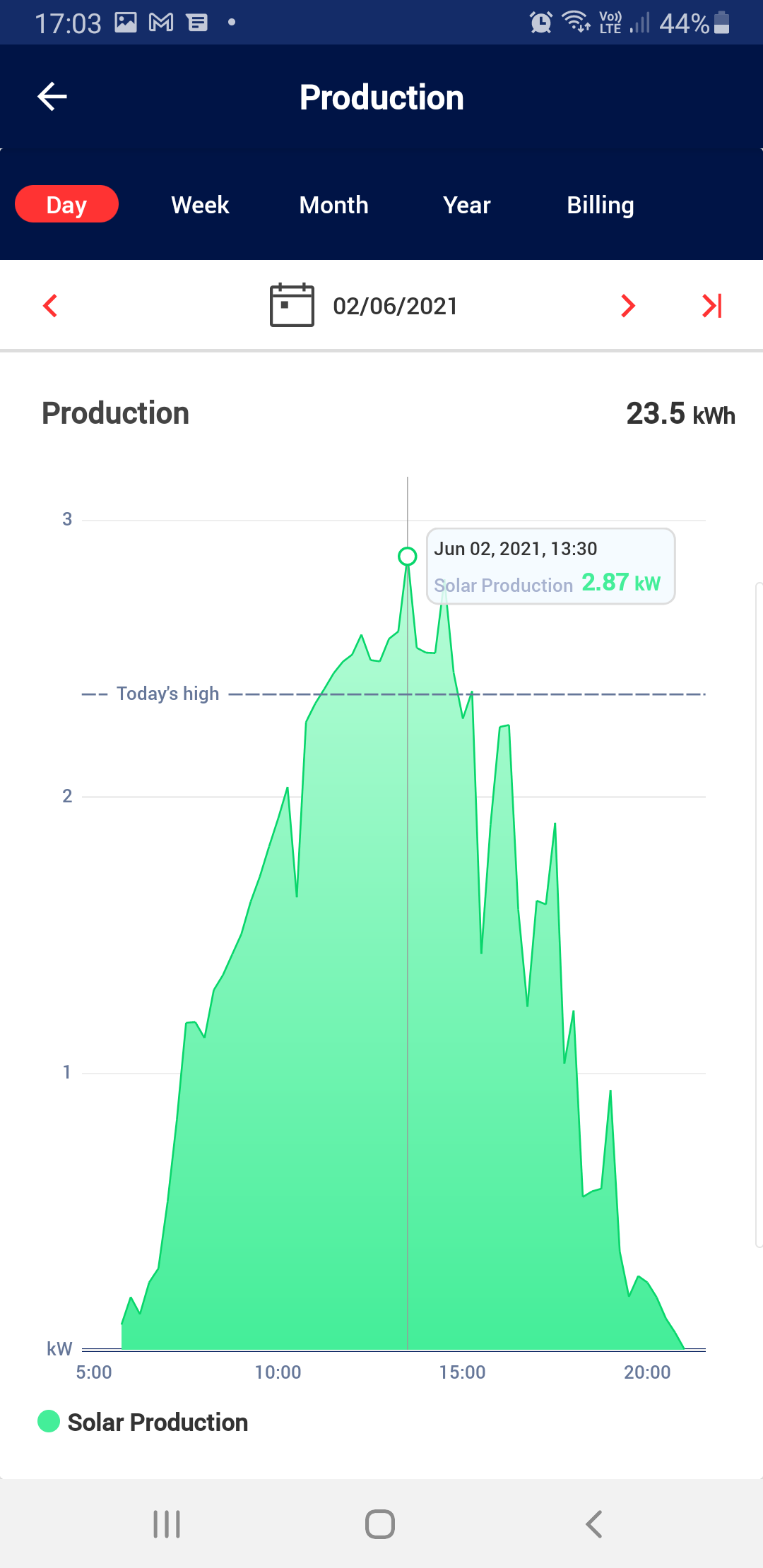
The software and monitoring system is my second bugbear. There is no standard platform to collect, share and analyse data. I think this could be a great opportunity for Kaluza like apps to integrate microgeneration with grid load balancing.
What about Solar Thermal panels?
I’ve a friend who has just had her Solar Thermal Panels aka Solar Water Heating removed from an unshaded south facing roof. She had them installed around 15 or 20 years ago, in the hope that it would reduce her climate impact. Whilst it did give hot water so that she did not need to heat it in summer, and it helped a little even in winter, it never came close to cost effective. There was an ongoing cost to maintenance that reduced the benefit, and payback would have been far longer than their life. Her roof needed retiling, and the cost of removing and refitting was prohibitive. Sorry I do not have actual figures.
I have abandoned any idea of such panels due to the cost which was quoted locally at £6000 to include a larger hot water cylinder that might have fitted into the airing cupboard, and our East/West roofs which would have limited any benefit. Cost of heating water is at present £8-£9 per month based on the amount of gas used in each of the summer months. Suggested savings were around £60 for a full year. There would have been a benefit from Renewable Heat Incentive (RHI) but the system would have to be installed and the RHI applied for before midnight on 31 March 2022.
What’s the best way to store the energy my Solar panels generate?
Solar storage options are discussed at length in these related topics:
There’s some more in-depth advice in the comments below. We’ll also be separating some of these into a PV self-installation guide by none other than Plan Zero Hero,
Any more questions we haven’t covered or just need a bit of advice from our community experts? - Join in the conversation below, we’d love to help others on their energy-generating journey. ![]()


